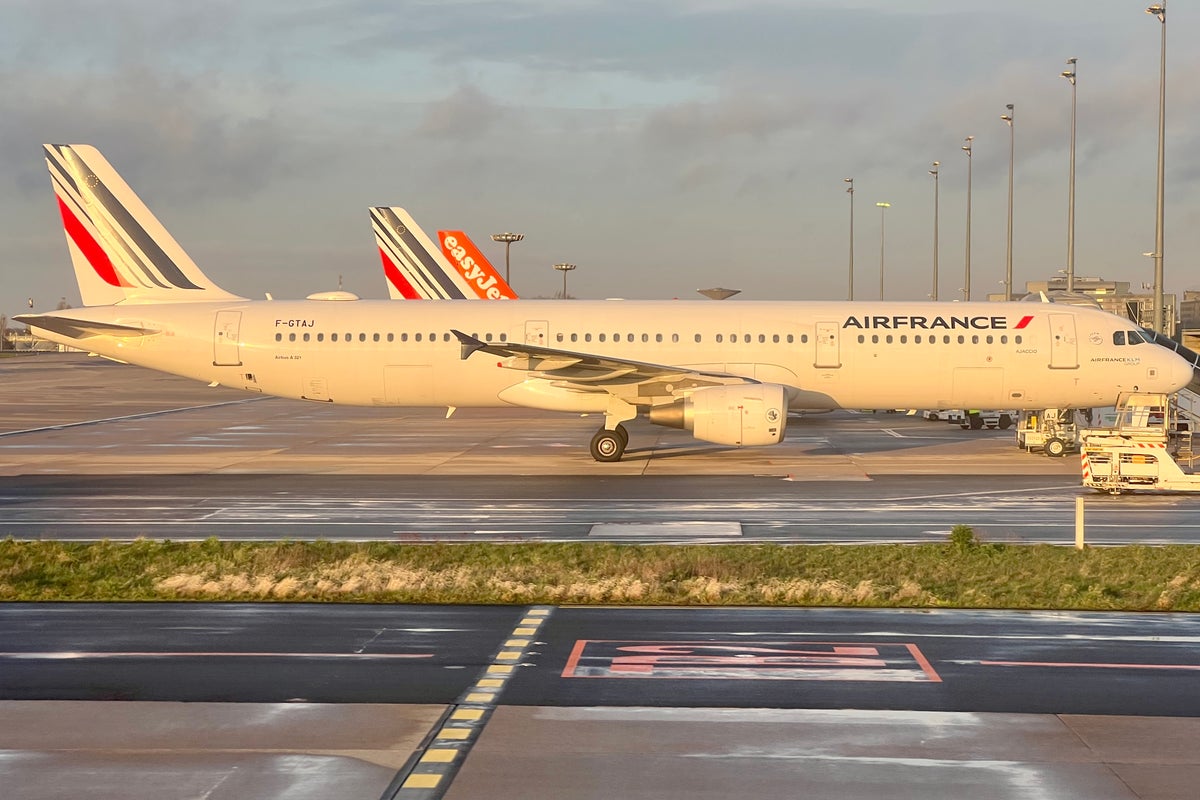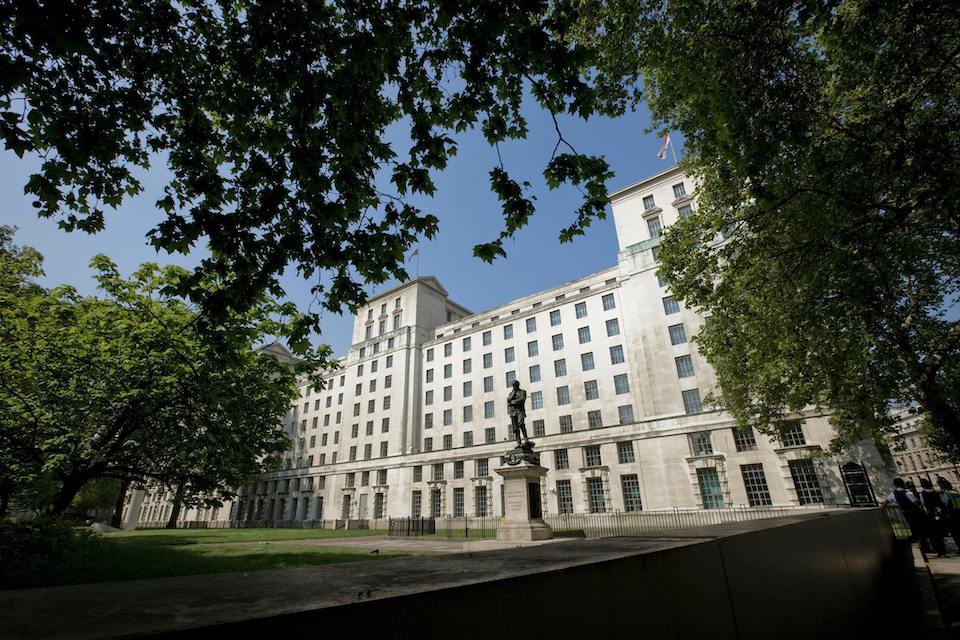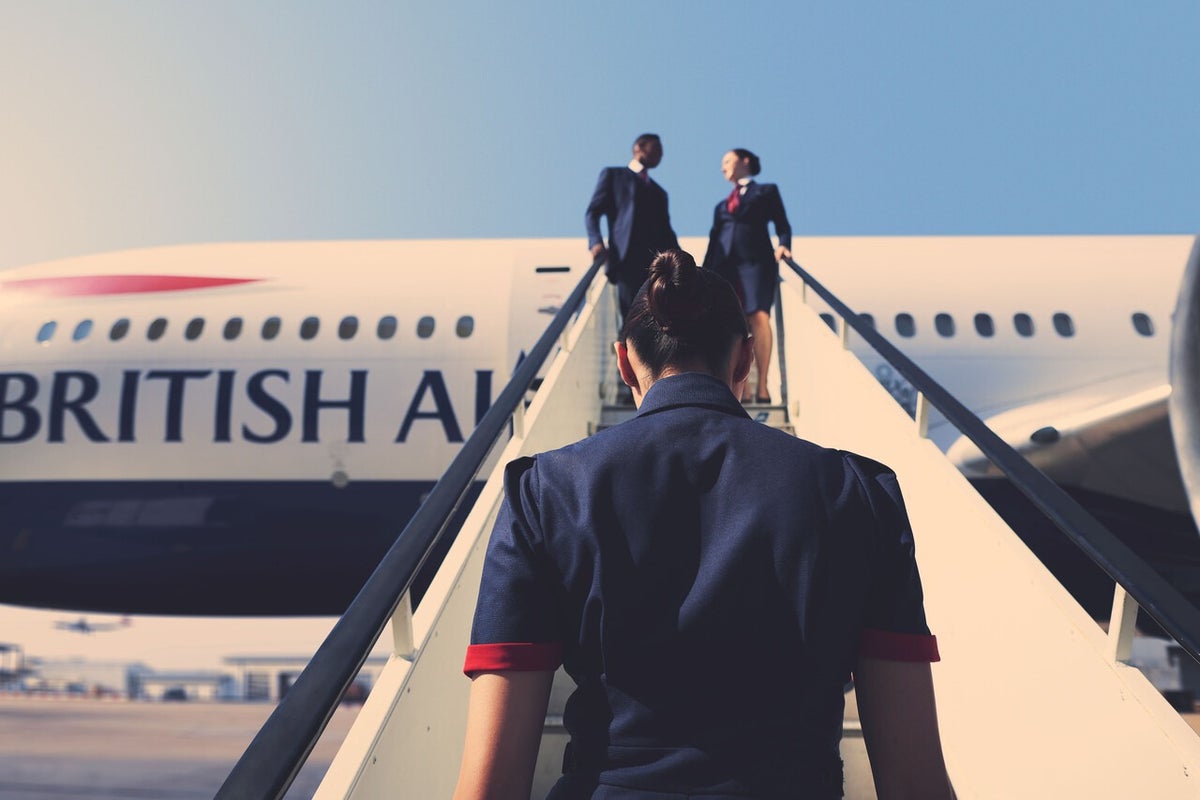I was not prepared for a prolonged, ear-piercing scream when I pulled the red toggle on my life jacket.
It’s not even 12pm, and my expertly crafted donut bun has already been enclosed in alien-esque PPE and tested in a fire chamber. Now standing in a cabin classroom with an inflated yellow ring around my neck, I don’t know if I should still be smiling, reciting safety instructions, fighting a fire or evacuating my imaginary passengers.
This is obviously not a normal day in the office. I usually spend my mornings writing about cabin crew wrestling passengers as in-air bouncers, navigating emergency landings and being targeted for airlines’ terrible in-flight meals.
But for one day on the other side of operations, I went airside at Heathrow Airport to experience flight attendant training at British Airways Global Learning Academy (GLA).
I am here because I want to go down the slide. Your flight attendants show up as a continuous commitment to keeping passengers safe at 35,000ft.
Training to fly for the UK’s flag carrier usually involves a six-week intensive course of safety procedures, service and everything aircraft.
It doesn’t stop there. To keep their wings, BA flight attendants must annually pass 12 exams, with the crew of first-class undertaking their own four-day specialist programme to serve the cabin elite.
Sure, the faces of your flight still pour tea and point at exits, but with as many as 469 passengers commanding attention at the push of a button, what does the role really involve?
“Safety underpins everything,” says David Mason, a British Airways training product manager.
Following a recent string of aviation accidents and mid-air medical emergencies, including the fatal Air India crash and cardiac arrest on a Qantas flight in June, it’s this that’s at the forefront of most travellers’ minds.
Still, most flyers are guilty of diving into their seat pocket during the well-choreographed safety demonstration at the start of every journey.
David tells me: “Service is important but secondary; safety is behind the scenes.”
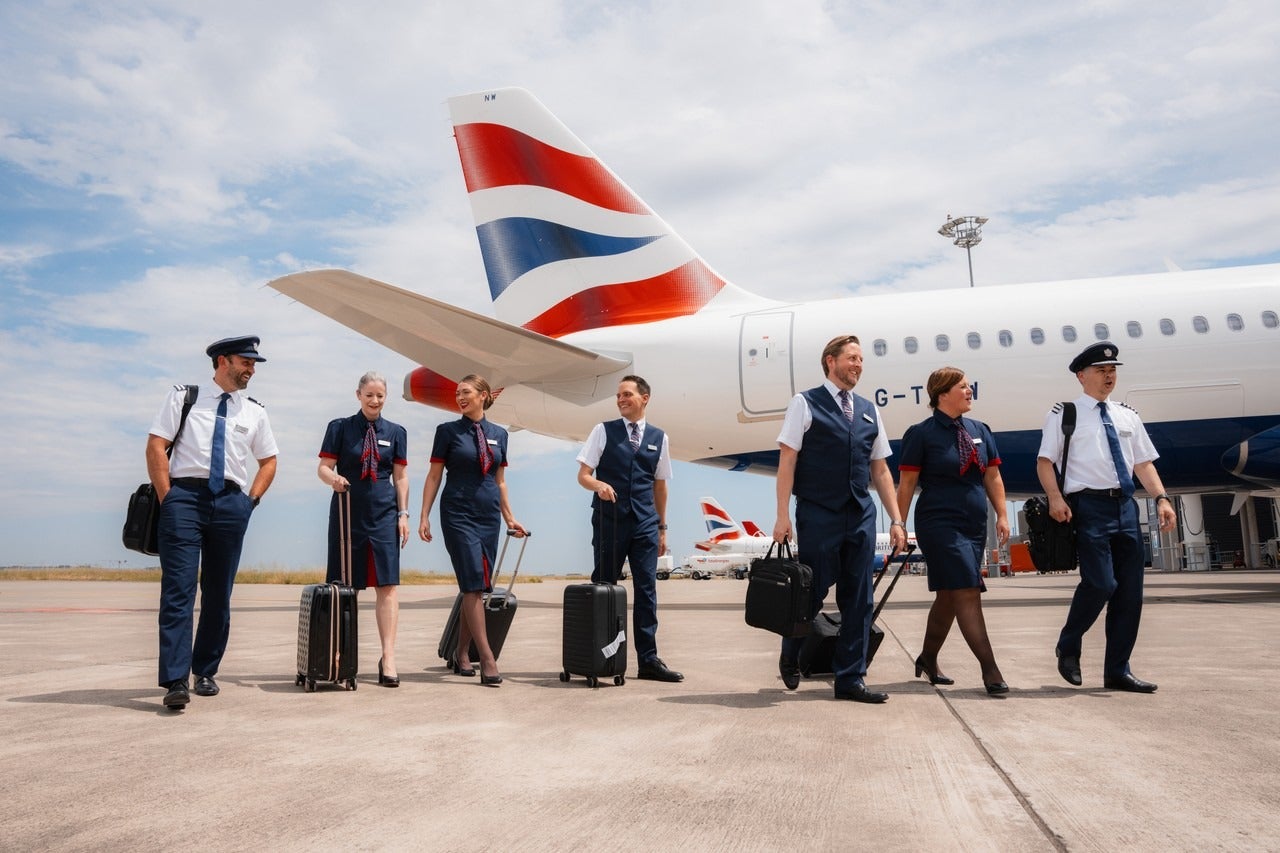
My “trolley dolly” makeover to look the part is a far cry from the role’s past stupidly selective list of physical attributes for women to be sent to the sky. Single with slender legs, clear skin and a “good carriage” were the requirements for a “stewardess” flying with Chicago and Southern Air Lines in 1954.
British Airways’ “functionality check” now requires a height between around 1.575m and 2.01m, and a vertical function reach of at least 2.01m to ensure staff can manually release evacuation slides in an emergency.
As of spring 2023, new BA uniforms have also made heels optional, to go with navy dresses, donut buns, scrunchies, black flats and the chrome name badge that certifies you’ve got your wings.
The discovery of pockets in the – dare I say – comfortable dress cemented that standards now exist so staff look smart, not sexy.
David explains: “There is no set criteria for what a member of cabin crew looks like; you are moulded to the role so that we have people with a range of skills.”
My neon orange nails wouldn’t have flown had I been an official candidate to run operations in the cabin.
In the training facility’s fire chamber, the first security scenario shatters any residual image of the glorified waitress stereotype.
It may have been a fake phone, not a lithium battery – enemy of the cabin – but it was flaming, and with a fire extinguisher in hand, I had to move quickly to follow the commands of GLA trainer Tom.
Crew are expected to react calmly but urgently in the event of such an emergency on board.
There are some things you never want to happen during a flight. On an ideal journey, your lifejacket stays under your seat, oxygen masks hide overhead, and you never ever see the inflatable slide.
After 25 years on this planet, I had foolishly thought opening a door was something I had down. Forget the intrusive thought you’ve had while queueing for the aircraft bathroom; opening and closing airplane doors is not that simple. It’s a multi-step, heavy process that goes beyond opening a handle.
Oh, and each aircraft model is different, with a warehouse of different simulators to try your hand at boarding before the novel-worth of safety checks to tick off onboard.
BAs beloved miniature bottles had me unexpectedly reliving my waitressing days, poorly memorising a menu of grapes I still don’t know how to pronounce. Crew must also lock bar trolley breaks as muscle memory or risk mowing down a rogue child in the aisle.
As reports of booze-fuelled unruly behaviour from passengers rise, it’s surprising to hear that it’s hard to cause a scene with flight attendants in the sky.
“Customers are my bread and butter. I need them there to do my job, so nothing actually winds me up that much,” says David, adding, “we like it when customers are excited about flying.”
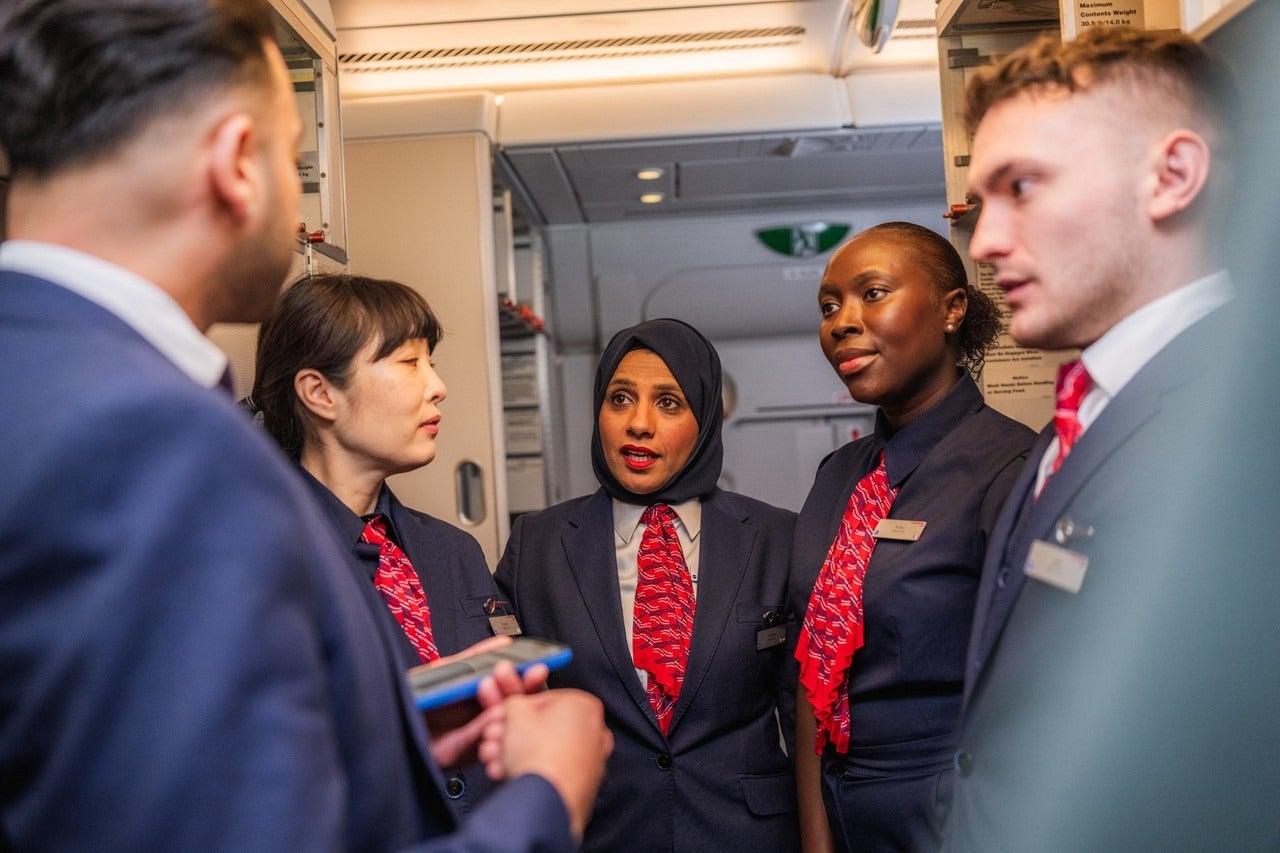
Your flight attendants are responsible for everything on board in the time between each flight bridge – multiple times a day, for short-haul staff.
As a passenger, I have watched crew have a “galley huddle” and assumed it was akin to gossiping by the office coffee machine. In reality, there are actual safety and service procedures to discuss depending on the crew, flight length, passenger numbers and aircraft model, beyond which celebrity has sat in first-class.
“Somehow every day is different even though we do the same thing every day,” says David.
First-class adds even more elements to the cabin crew cum concierge, cleaner, waitress and security role. That’s everything, bar tucking in top category passengers – from setting up seats for multi-course meals on demand, making beds, and a turndown service in the time it takes a customer to get kitted out in their BA pjs.
It may be secondary to safety, but serving a multi-course meal from a heavy tray with a smile is far from easy even in a mock-up of British Airways’ new first class cabin. Add in the odds of an ungraceful fall courtesy of turbulence, and I’m quickly vowing to be a more patient passenger the next time my toastie takes a while to land on my tray.
Exhausted from a brain-whirring list of protocols and a face frozen in my customer service smile, I leave with a new admiration for cabin crew and a shiny participation certificate I’m told will not get me in the galley anytime soon.
Read more: This is what it takes to become a Kilimanjaro mountain guide
